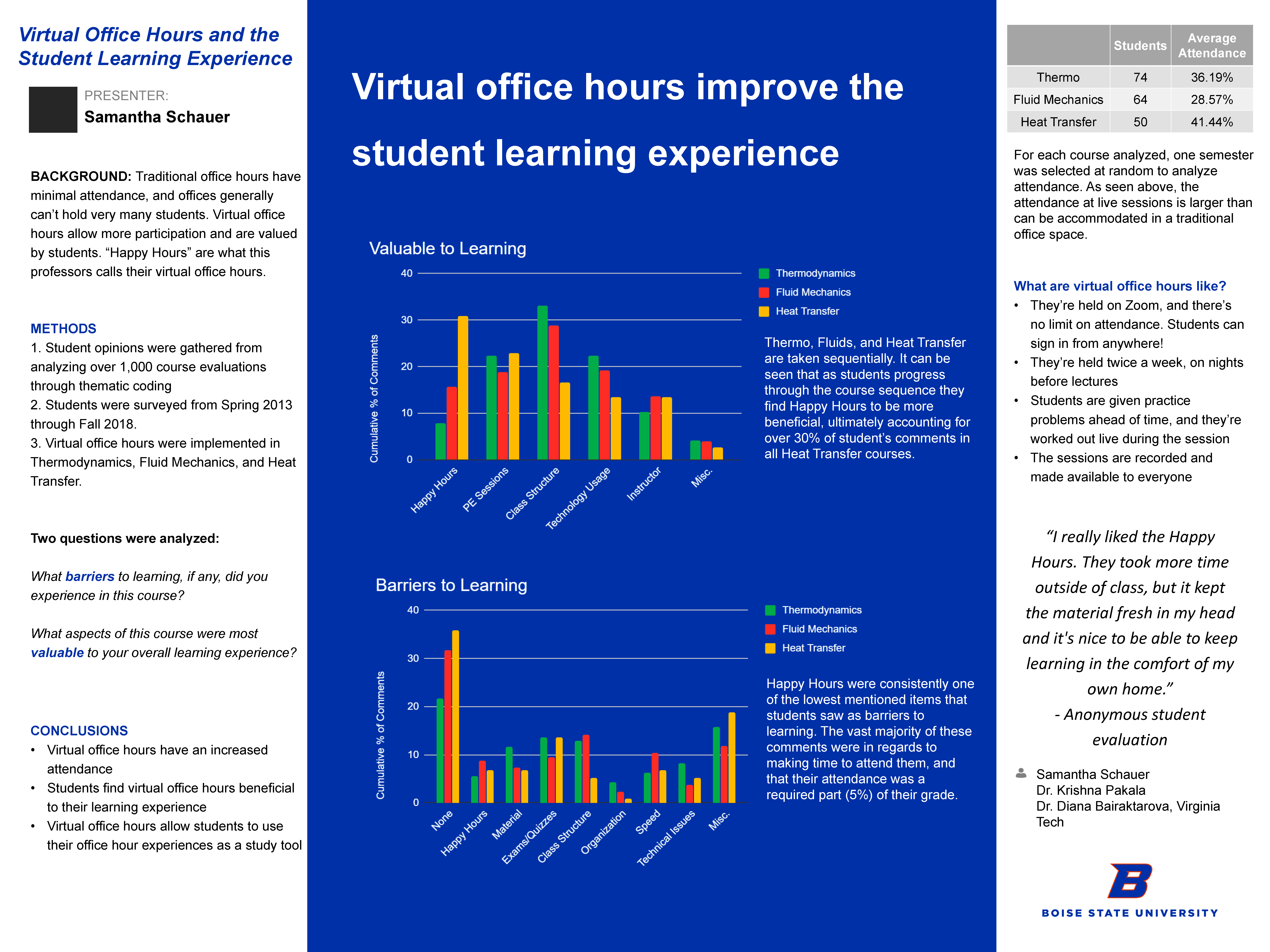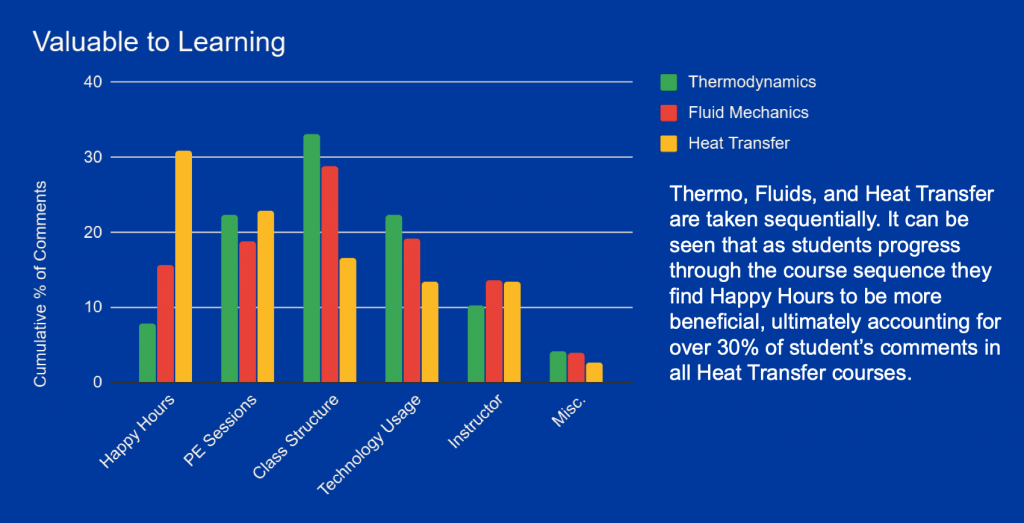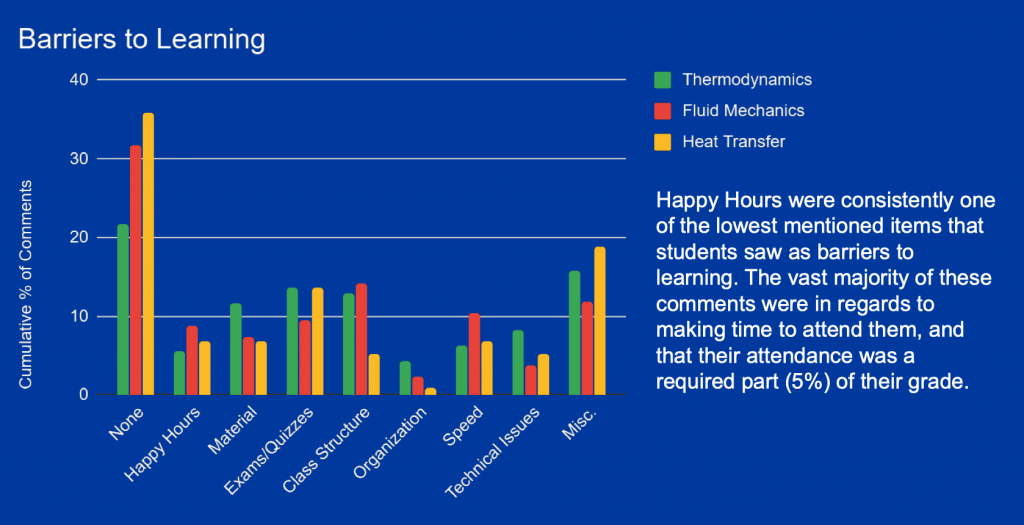Samantha Schauer, Dr. Krishna Pakala, Dr. Diana Bairaktarova

Background
Traditional office hours have minimal attendance, and offices generally can’t hold very many students. Virtual office hours allow more participation and are valued by students. “Happy Hours” are what this professors calls their virtual office hours.
Methods
- Student opinions were gathered from analyzing over 1,000 course evaluations through thematic coding
- Students were surveyed from Spring 2013 through Fall 2018.
- Virtual office hours were implemented in Thermodynamics, Fluid Mechanics, and Heat Transfer.
Two questions were analyzed:
- What barriers to learning, if any, did you experience in this course?
- What aspects of this course were most valuable to your overall learning experience?
| Course | Students | Average Attendance |
|---|---|---|
| Thermo | 74 | 36.19% |
| Fluid Mechanics | 64 | 28.57% |
| Heat Transfer | 50 | 41.44% |
For each course analyzed, one semester was selected at random to analyze attendance. As seen above, the attendance at live sessions is larger than can be accommodated in a traditional office space.
What are virtual office hours like?
- They’re held on Zoom, and there’s no limit on attendance. Students can sign in from anywhere!
- They’re held twice a week, on nights before lectures
- Students are given practice problems ahead of time, and they’re worked out live during the session
- The sessions are recorded and made available to everyone
“I really liked the Happy Hours. They took more time outside of class, but it kept the material fresh in my head and it’s nice to be able to keep learning in the comfort of my own home.” – Anonymous student evaluation


Conclusions
- Virtual office hours have an increased attendance
- Students find virtual office hours beneficial to their learning experience
- Virtual office hours allow students to use their office hour experiences as a study tool
Additional Information
For questions or comments about this research, contact Samantha Schauer at SamanthaSchauer@u.boisestate.edu.